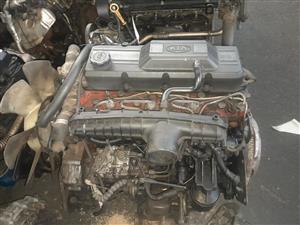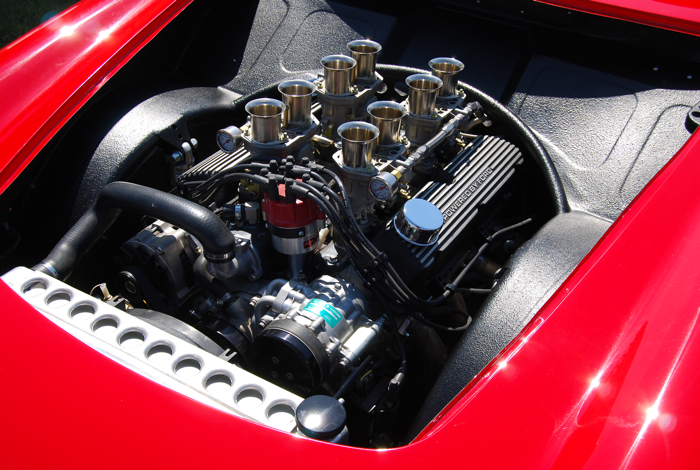Economical Opel Corsa Engine Options for Your Budget plan
Economical Opel Corsa Engine Options for Your Budget plan
Blog Article
Discovering the Inner Operation of a Compact Car's Engine System
As drivers, we often take for given the detailed processes that take place within the confines of our automobile's engine system. In this expedition of a compact automobile's engine system, we will certainly decipher the internal workings of this mechanical symphony, losing light on the mysteries that drive us forward on our everyday trips.
Combustion Process Introduction
The burning process in a compact automobile's engine system is a critical system that successfully converts fuel into power to power the lorry. This process takes place within the combustion chamber of the engine, where fuel and air mix, spark, and generate controlled explosions. The combustion procedure is composed of four major phases: intake, power, compression, and exhaust.
During the consumption phase, the piston relocates downward, pulling in a mixture of air and gas into the burning chamber. The next stage, compression, entails the piston moving upwards, compressing the air-fuel mixture to boost its potency. Ultimately, in the power stage, the trigger plug stirs up the pressed mixture, causing a rapid growth of gases that forces the piston back down. This downward movement produces the power required to drive the car. In the exhaust stage, the burnt gases are eliminated from the combustion chamber with the exhaust shutoff, preparing the chamber for the next cycle. This cyclic burning process is basic to the operation of a portable car's engine system, ensuring effective power conversion for propulsion.
Piston and Cylinder Interaction

The piston's specific fit within the cylinder is essential for keeping optimal compression and stopping power loss during combustion. Tight clearances between the piston and cylinder walls guarantee efficient sealing, allowing the piston to relocate efficiently without enabling gases to leak past. Appropriate lubrication is also important to reduce friction and put on in between these elements, enhancing durability and performance.
Furthermore, the layout and products utilized in producing the piston and cyndrical tube impact engine efficiency and toughness. Modern engines commonly utilize lightweight yet sturdy products like aluminum alloys for pistons and cylinder liners to reduce inertia and boost thermal performance. Generally, the harmonious communication in between the piston and cylinder is basic to the engine's capability and total performance.
Fuel Shot System Performance
Gas injection systems in compact automobile engines play an important role in specifically providing gas to the combustion find more information chamber for controlled and effective ignition. The fuel injection system operates by injecting gas into the burning chamber at the optimal minute throughout the engine's procedure (opel corsa engine). This precise timing makes certain that the fuel blends evenly with the air for correct combustion, resulting in improved fuel performance and minimized emissions
There are mostly 2 kinds of gas injection systems utilized in compact automobile engines: port gas injection (PFI) and direct gas injection (DFI) PFI systems inject gas into the intake port prior to the consumption valve, while DFI systems inject gas straight into the burning chamber. Both systems have their benefits, with DFI supplying much better gas atomization and PFI providing a much more cost-efficient service.
Recognizing Engine Air Conditioning Mechanisms
Efficient procedure of a small automobile's engine depends heavily on the effectiveness of its cooling devices. The air conditioning system in a compact vehicle generally consists of numerous elements working with each other to control the engine temperature. Understanding these engine air conditioning systems is vital for keeping the performance and longevity of a portable automobile's engine system.

Exhaust System Components Explained
The optimal performance of a small car's engine air conditioning devices relies on a complementary system referred to as the exhaust system, which consists of different important parts for making sure efficient exhausts and engine performance. The exhaust system includes parts such as the exhaust manifold, catalytic converter, muffler, and tailpipe. The exhaust manifold collects exhaust gases from the engine's cyndrical tubes and paths them to the catalytic converter. The catalytic converter then transforms hazardous toxins in the exhaust into much company website less dangerous emissions prior to releasing them with the muffler and tailpipe.
One vital component of the exhaust system is the oxygen sensing unit, which checks the oxygen levels in the exhaust gases to assist regulate gas consumption and make sure optimum engine performance. opel corsa engine. Furthermore, the resonator might exist in some exhaust systems to decrease sound levels. On the whole, the exhaust system plays an important function in keeping engine efficiency, minimizing harmful emissions, and making sure a quieter driving experience for portable car proprietors

Final Thought
In conclusion, the compact automobile's engine system is a complex mix of components that collaborate to facilitate the combustion process, convert gas right into power, and remove waste gases. Comprehending the internal operations of the engine system, including the piston and cylinder communication, gas injection system, engine cooling devices, and exhaust system components, is about his important for keeping optimum efficiency and performance of the vehicle.
The combustion process in a compact car's engine system is a critical mechanism that efficiently converts fuel into energy to power the vehicle.Gas shot systems in portable lorry engines play a crucial role in exactly delivering gas to the burning chamber for controlled and efficient ignition.There are mainly two types of gas shot systems utilized in small car engines: port fuel injection (PFI) and straight gas injection (DFI) Understanding these engine air conditioning mechanisms is important for maintaining the performance and long life of a portable automobile's engine system.
The ideal functioning of a small car's engine cooling mechanisms depends on a complementary system known as the exhaust system, which comprises different essential parts for making sure efficient emissions and engine efficiency.
Report this page